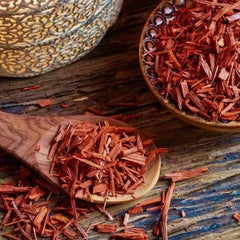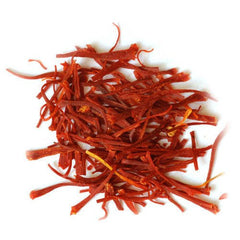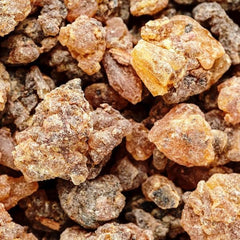What Makes a Perfume Leathery?
Click For Affordable Inspired Perfume Alternatives
Perfume is an art form that combines various aromatic ingredients to evoke emotions, memories, and sensations. Among the numerous fragrance families, leathery perfumes hold a unique and captivating appeal. These scents are often associated with sophistication, sensuality, and timeless elegance. But what exactly makes a perfume leathery? Is it the ingredients, the composition, or the way it interacts with the wearer’s skin? In this article, we delve into the characteristics that define a leathery perfume, exploring the key notes, ingredients, and olfactory techniques that create this distinctive aroma.
What Makes a Perfume Leathery?
Leathery perfumes are distinguished by their rich, warm, and often smoky aroma that evokes the sensation of supple, well-worn leather. This fragrance style has been a staple in perfumery for centuries, embodying luxury, masculinity, and a touch of vintage charm. The leathery scent is not necessarily derived from actual leather but is crafted through a strategic combination of specific ingredients and notes that mimic or evoke the essence of leather. Understanding what makes a perfume leathery involves exploring its core components, the olfactory techniques used by perfumers, and the emotional resonance it creates.
Key Ingredients That Contribute to a Leathery Aroma
At the heart of leathery perfumes are certain ingredients that serve as the building blocks for this distinctive scent profile. These ingredients can be natural or synthetic, but they all share the ability to evoke the qualities of leather—warmth, depth, and a slightly smoky or animalic undertone.
- Castoreum: Derived from the anal glands of beavers, castoreum has historically been one of the most iconic ingredients used to create leathery scents. It imparts a rich, animalic, and slightly sweet aroma that closely resembles the scent of leather.
- Birch Tar (Galbanum and Birch Resinoid): This natural or synthetic ingredient provides smoky, resinous, and woody facets that contribute to the authentic leathery feel.
- Amber and Resins: These add warmth and depth, creating a sense of aged leather with a comforting allure.
- Leather Accord: A carefully crafted blend of various notes, both natural and synthetic, designed explicitly to mimic the scent of leather. This can include elements like tobacco, smoky resins, and animalic notes.
- Patchouli: Known for its earthy, woody aroma, patchouli enhances the richness and complexity of leathery fragrances.
- Sandalwood and Cedarwood: These woody notes add a smooth, creamy, and warm base that complements the leathery profile.
- Synthetic Notes: Modern perfumery often employs synthetic molecules such as Iso E Super, Civet, or Ethyl Maltol to enhance or mimic the leathery qualities in a more sustainable and versatile way.
Olfactory Techniques and Composition
Creating a leathery perfume involves more than just selecting ingredients; it requires mastering the art of composition to balance the different notes harmoniously. Perfumers utilize various techniques to evoke leather's sensory qualities:
- Layering of Notes: Combining top, middle, and base notes strategically to develop a scent that unfolds over time, revealing leathery qualities gradually.
- Use of Smoky and Animalic Notes: Incorporating smoky resins and animalic ingredients to add depth and authenticity.
- Balancing Warmth and Freshness: Achieving the right balance between warm, rich notes and fresh, sharper elements prevents the scent from becoming too heavy or dull.
- Emphasis on Texture: Creating a tactile sensation through scent, making the fragrance feel 'soft' or 'rough,' similar to leather's tactile qualities.
The Evolution of Leathery Scents in Perfume History
Leathery fragrances have a rich history rooted in traditional perfumery. In the past, authentic animalic ingredients like castoreum and civet were used extensively, which contributed to their potent and natural leathery aroma. However, due to ethical concerns and regulations, perfumers shifted towards synthetic alternatives that replicate these complex notes without harming animals.
Today, leathery perfumes range from bold and intense to subtle and refined. Classics like Chanel Cuir de Russie and Fahrenheit by Dior exemplify the timeless appeal of leathery scents, blending traditional ingredients with modern techniques. Contemporary perfumers continue to innovate, creating versatile fragrances that appeal to diverse preferences while maintaining the core leathery essence.
What Makes a Perfume Feel Leathery?
Beyond the ingredients, a leathery perfume also evokes certain feelings and images. The perception of a leathery scent can be influenced by its:
- Texture: The scent may evoke a sense of softness, ruggedness, or durability, much like leather itself.
- Warmth: Leathery fragrances often have a warm, cozy quality that makes them comforting and sensual.
- Complexity: The layered notes create a multi-dimensional experience that feels rich and substantial.
- Elegance and Sophistication: Leather has historically been associated with luxury, craftsmanship, and timeless style, which is reflected in the fragrance's aura.
How to Identify a Leathery Perfume
If you're curious about spotting a leathery scent, here are some tips:
- Note Composition: Look for prominent ingredients like castoreum, birch tar, or synthetic leather accords.
- Fragrance Family: Leathery perfumes often belong to the woody or chypre families but can also be found in oriental or amber scents.
- Fragrance Profile: They tend to be warm, smoky, and animalic with a rich, textured feel.
- Longevity and Sillage: Leathery scents often have good staying power and a noticeable sillage, emphasizing their depth.
Conclusion: The Enduring Allure of Leathery Perfumes
Leathery perfumes continue to captivate fragrance enthusiasts with their timeless appeal and complex character. Whether evoking the elegance of a well-worn jacket, the sophistication of a vintage cologne, or the sensuality of a leather-bound book, these scents possess a unique ability to convey strength, refinement, and allure. Through a careful blend of natural ingredients and innovative synthetic molecules, perfumers craft leathery fragrances that are both evocative and versatile, ensuring their place in the olfactory landscape for generations to come. If you seek a scent that embodies depth, warmth, and sophistication, exploring leathery perfumes might just lead you to your new signature fragrance.
Buy Perfumes - Best Online Retailers
Click For Affordable Inspired Perfume Alternatives
Click For The Best Niche Perfumes & Decants
Pheromone Perfumes - Confidence, Attraction & Appeal - Click For More
Home Fragrances & Candle Warmers - Click To Scent Up Your Spaces Today!



